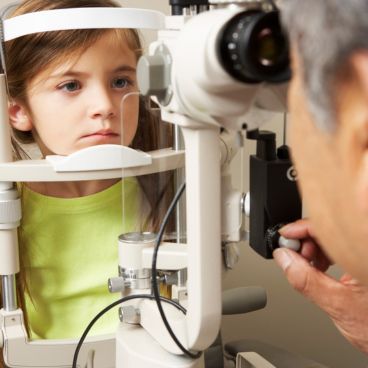Evaluations
Evaluations determine a student’s strengths and needs to promote academic success. They assess cognitive, academic, social-emotional, and physical abilities. At RBSS, we provide both monolingual and bilingual evaluations to ensure that all students are properly evaluated.
The parents of a child with a disability have the right to obtain an independent educational evaluation of their child.
INDIVIDUALS WITH DISABILITIES EDUCATION ACT

Assistive Technology Evaluation
An assistive technology evaluation consists of standardized and non standardized assessments to identify the most beneficial devices and services for learners with disabilities. The goal is to improve students' academic performance, independence, and quality of life by matching assistive technology solutions to their unique skills, needs, and preferences through comprehensive evaluation.

Speech & Language Evaluation
A speech and language evaluation consists of standardized language assessments with normative data as well as non-standardized assessments of communication function. This combination allows the speech-language pathologist to evaluate a child's speech sound production, voice, fluency, language, and pragmatic skills to determine if an underlying communication disorder is impacting their ability to access curriculum and participate in classroom activities.

Auditory Processing Evaluation
An auditory processing evaluation consists of standardized and nonstandardized assessments to identify how well a student can process and interpret auditory information. The goal is to determine if auditory processing difficulties are impacting the student's academic performance and identify assistive technology solutions tailored to the individual's listening and communication needs through comprehensive evaluation.

Occupational Therapy Evaluation
An occupational therapy evaluation consists of both standardized assessments with normative data as well as non-standardized assessments based on observation of functional skills. This combination allows the occupational therapist to evaluate a child's motor, sensory, visual, cognitive, and psychosocial skills to determine if they have an underlying deficit that impacts their ability to access the curriculum or fully participate in educational activities.

Comprehensive Vision/Processing Evaluation
A comprehensive vision or visual processing evaluation consists of standardized optometric and ophthalmologic assessments as well as non-standardized functional assessments of visual skills. This combination allows for a thorough examination of all aspects of visual function including acuity, tracking, convergence, accommodation, and visual perception to determine if a visual deficit is impacting a child's academic performance.

Physical Therapy Evaluation
A physical therapy evaluation consists of both standardized assessments with normative data and non-standardized assessments based on observation of gross motor skills and mobility. This combination allows the physical therapist to evaluate a child's strength, range of motion, balance, coordination, posture, and ability to move independently to determine if they have an underlying motor deficit that impacts their participation in educational activities.

Feeding Evaluation
A feeding evaluation for students consists of standardized and nonstandardized assessments to identify oral motor, sensory, and behavioral factors impacting the student's feeding and swallowing abilities. The goal is to determine if the student has a feeding disorder, quantify their feeding and nutritional needs, and recommend assistive technology or therapeutic interventions tailored to the individual's skills and challenges.

Vocational Assessment
Vocational assessments support students with disabilities transitioning to adulthood. Through standardized testing and real-world observations, assessments evaluate students' interests, strengths, and support needs related to independent living and community participation. The goal is identifying optimal post-secondary paths aligned with students' unique abilities, including higher education, employment, volunteering, or community recreation.

In Class Observation
An in-class observation utilizes nonstandardized techniques like narrative recordings and time sampling to assess a student's participation and engagement within the classroom environment. The purpose is to identify learning barriers, quantify behaviors, and recommend educational or assistive technology supports tailored to the individual student's skills, needs, and responses in the academic setting.
